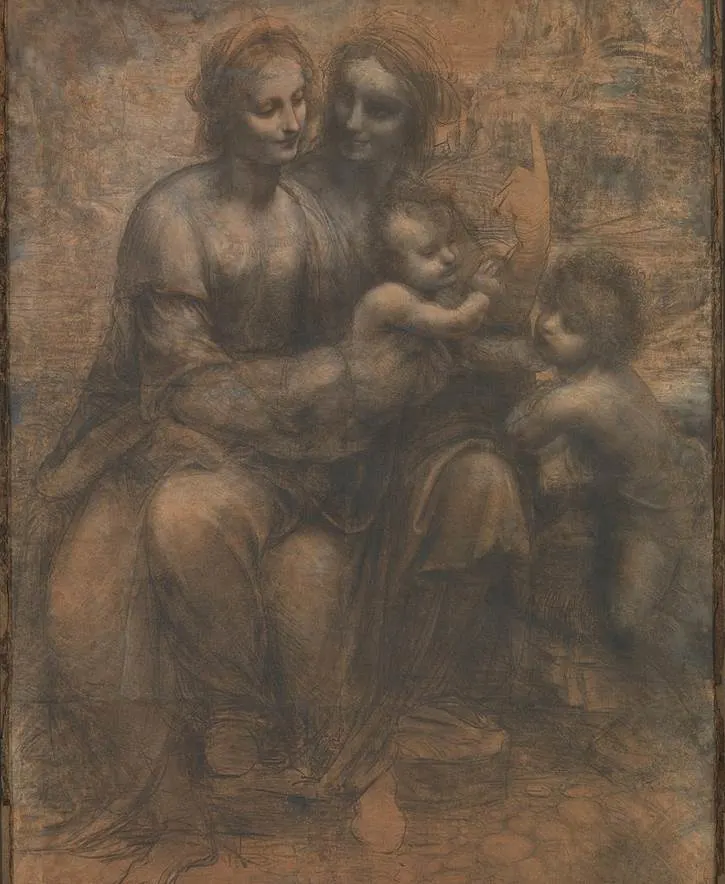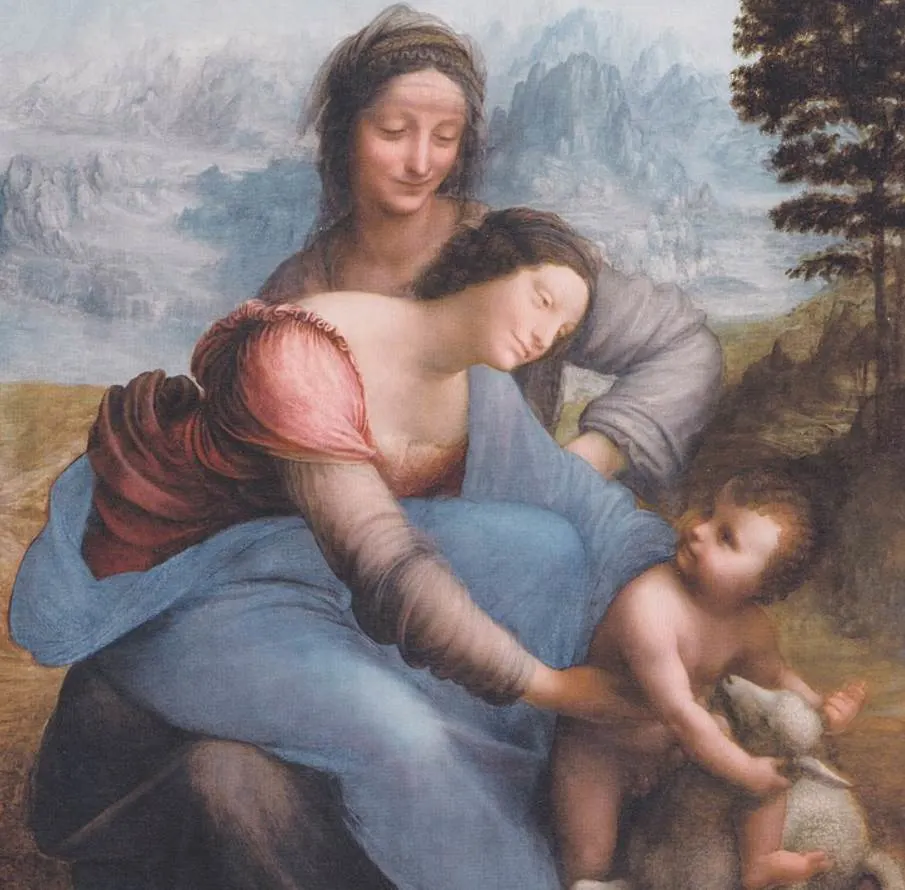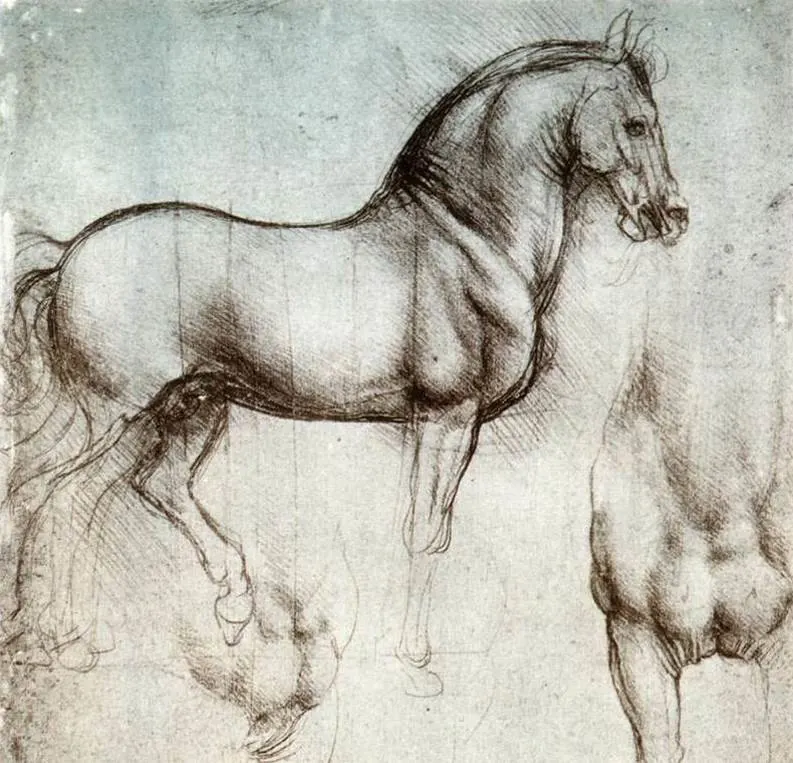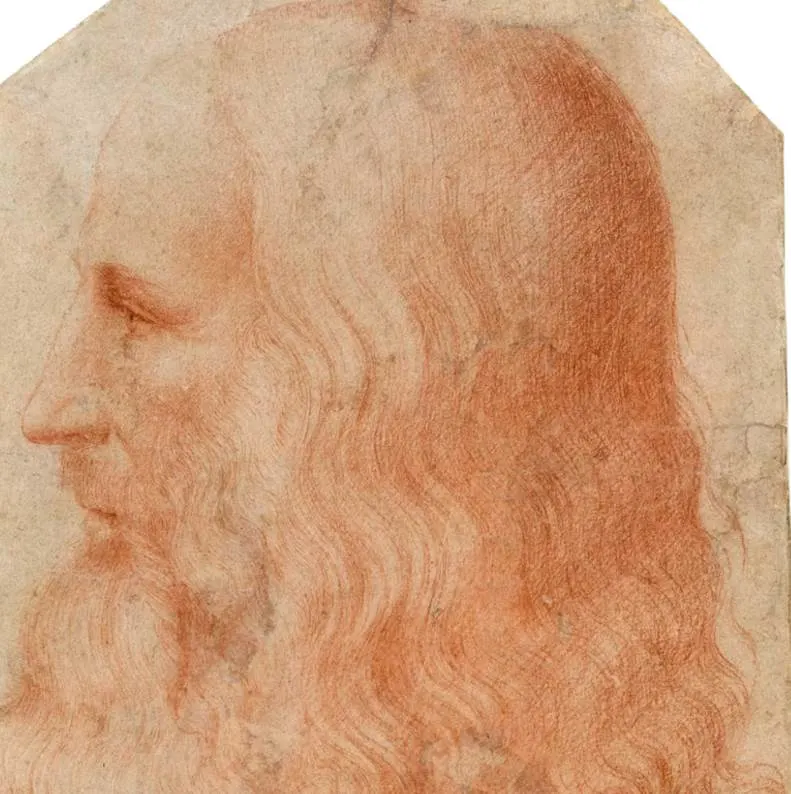When you are a genius, you have an extremely active mind. One of the greatest geniuses in history suffered from this as he tried to solve multiple problems at once.
Leonardo da Vinci (1452-1519) is best known for his famous paintings and drawings, but he was a lot more. This polymath was also an inventor, engineer, scientist, theorist, sculptor, and architect, to name just a few areas he excelled in.
Unfortunately, the ultimate Renaissance man didn’t complete many things he started, including numerous oil paintings. In this article, we’ll take a closer look at The Virgin and Child with Saint Anne by Leonardo da Vinci, one of these masterpieces that were left unfinished.
1. The artist probably started painting it in the early 16th century
We don’t know exactly when Leonardo started working on The Virgin and Child with Saint Anne, but we do know that he never completed it.
It’s one of those works that he kept along with him until he passed away in 1519, similar to how he brought the Mona Lisa Painting to France after being invited there by King Francis I of France (1494-1547).
Some art historians claim that he already started working on it during his first Milanese period in the 1490s. There’s even a suggestion that it was commissioned by King Louis XII to commemorate the birth of his daughter Claude, but this hasn’t been generally accepted.

2. Da Vinci already produced a cartoon with similar figures before
A date of around 1501 has been suggested as well and that’s based on a work that can be positively dated. This drawing is now referred to as the “Burlington House Cartoon” and is on display in the National Gallery in London.
Da Vinci first moved to Venice after his patron Ludovico Sforza was overthrown in Milan in 1499. He subsequently moved to Florence in 1500 where he found shelter with the monks of the monastery of Santissima Annunziata.
Here he presumably produced the drawing that depicts The Virgin and Child with Saint Anne and Saint John the Baptist in a similar position as in the painting.

It’s, therefore, possible that this was a preparatory drawing for the work and it was commissioned by the monks to decorate the Basilica della Santissima Annunziata, a remarkable Renaissance structure in Florence that was only completed 2 decades earlier in 1481.

3. It depicts the mother and grandmother of Jesus Christ
The painting depicts the Virgin Mary who sits on the lap of Saint Anne, a woman traditionally believed to be her mother. This also makes her the grandmother of Jesus Christ.
The true identity of Saint Anne isn’t mentioned in the canonical gospels but only appears by name for the first time in the Gospel of James, written around 150 A.D.
The Virgin can be seen sitting on the lap of her mother while trying to reach for her baby Jesus Christ. This is an unusual position that hadn’t been used in the world of art. Why the artist included this position remains unclear until today.
The age difference between the mother and daughter isn’t exactly clear as well. Leonardo tried to emphasize this relationship by portraying Saint Anne as proportionally larger than Mary.
4. The painting features a reference to the Passion of Christ
Another element that hints at the fact that Mary is sitting on the lap of her mother Saint Anne is that she is staring directly at her daughter. Mary is doing the same as she is staring into the eyes of her son Jesus Christ.
Jesus is trying to grab a lamb as his mother is trying to hold the infant back. A lamb is a traditional sacrificial animal that represents gentleness, innocence, and purity.
This element is a reference to the Passion of Jesus Christ, the final period of his life in which he, according to Christian writings, sacrificed himself to save humanity.

5. 3 sketches have been revealed on the backside of the painting
One of the most fascinating facts about The Virgin and Child with Saint Anne is that several sketches, probably by the hand of Leonardo da Vinci himself, have been discovered on the flip side of the painting in the 21st century.
Infrared technology was used to examine the backside of the masterpiece and the following drawings were recognized:
- A drawing of a horse’s head resembles sketches produced by the artist for The Battle of Anghiari.
- A drawing of half a human skull.
- A sketch depicting the infant Jesus Christ playing with a lamb.
Remarkably, only the drawing of Jesus and the lamb are elements that are featured in the painting on the front.

6. It was probably close to Leonardo’s heart for a particular reason
Sigmund Freud (1856-1939), the founder of psychoanalysis, closely examined Leonardo and came up with a theory regarding the peculiar composition of the painting.
This one concerns the relationship between Mary and her mother Saint Anne as she is sitting on her mother’s lap and barely looks younger than her mother as well.
Leonardo was born out of wedlock halfway through the 15th century and after initially being together with his real mother, was raised by his stepmother.
Freud concluded that Leonardo painted his two mothers, a notion that makes both the Burlington House Cartoon and The Virgin and Child with Saint Anne even more intriguing works of art.

7. How big is The Virgin and Child with Saint Anne by Leonardo da Vinci?
Leonardo da Vinci worked painstakingly slow, another reason why it took him a long time to complete his commissions. This often resulted in angry patrons, something he managed to solve with both his talent and natural charm.
This work was left unfinished and is relatively big for da Vinci’s standard as this oil-on-wood painting has dimensions of 130 × 168,4 centimeters (51 × 66.3 inches).
8. Where is the painting located today?
The painting was in the personal collection of the artist when he passed away while working in France, similar to how he left behind the Mona Lisa painting, the most famous work he ever produced.
He probably suffered from a stroke during the final years of his life, leaving his right hand paralyzed at the age of 65. This might explain why he never finished the works, but I tend to believe that he was simply too preoccupied with other stuff.
His loyal assistant Salai inherited many of his works and most probably sold them to the King of France. From here, the painting entered the royal collection of France and eventually into the collection of the Louvre Museum in Paris.
Today, the painting can still be admired here in Room 5, along with numerous other works of both da Vinci and other famous Italian artists. This room is also called the “Grande Gallerie” and is situated in the Denon Wing of the most popular museum in the world.

